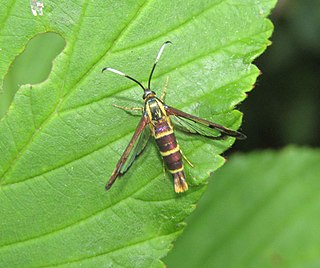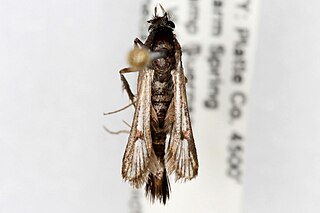In ancient Roman religion, Antevorta was a goddess of the future, also known as Porrima. She and her sister Postverta were described as companions or siblings of the goddess Carmenta, sometimes referred to as "the Carmentae". They may have originally been two aspects of Carmenta, namely those of her knowledge of the future and the past.

In Roman mythology, the Camenae were originally goddesses of childbirth, wells and fountains, and also prophetic deities.

In ancient Roman religion and myth, Carmenta was a goddess of childbirth and prophecy, associated with technological innovation as well as the protection of mothers and children, and a patron of midwives. She was also said to have invented the Latin alphabet.
Carmenta is a genus of moths in the family Sesiidae.
Carmentalia was the two feast days of the Roman goddess Carmenta. She had her temple atop the Capitoline Hill. Carmenta was invoked in it as Postvorta and Antevorta, epithets which had reference to her power of looking back into the past and forward into the future. The festival was chiefly observed by women.
Carmenta albociliata is a moth of the family Sesiidae. It was described by Engelhardt in 1925. It is known from North America, including Texas and Arizona.
Carmenta anthracipennis, the liatris borer moth, is a moth of the family Sesiidae. It was described by Jean Baptiste Boisduval in 1875, and is known from the United States, including Florida, Texas, Massachusetts and Illinois.

Carmenta bassiformis, the eupatorium borer moth, is a moth of the family Sesiidae. It was described by Francis Walker in 1856, and is found in the United States from Massachusetts to Florida, west to Wisconsin, Kansas and Texas.
Carmenta giliae is a moth of the family Sesiidae. It was described by Henry Edwards in 1881, and is found from western Alberta to north-western British Columbia, south to Arizona and New Mexico. The habitat consists of mid-to-high elevation montane meadows.
Carmenta mariona is a moth of the family Sesiidae. It was described by William Beutenmüller in 1900. It is found in the United States from Montana, south to Arizona and east to Kansas.
Carmenta odda is a moth of the family Sesiidae. It was described by W. Donald Duckworth and Thomas Drake Eichlin in 1977. It is found in the United States from South Carolina to Florida.
Carmenta ogalala is a moth of the family Sesiidae. It was described by Engelhardt in 1946. It is known from Colorado.
Carmenta pallene is a moth of the family Sesiidae. It was described by Herbert Druce in 1889. It was described from Tabasco in Mexico, but it is also known from Arizona in the United States.
Carmenta prosopis is a moth of the family Sesiidae. It was described by Henry Edwards in 1882, and is known from northern Mexico, and south-western United States.
Carmenta rubricincta is a moth of the family Sesiidae. It was described by William Beutenmüller in 1909. It is known from North America, including Arizona.
Carmenta texana, the Texana clearwing moth, is a moth of the family Sesiidae. It was described by Henry Edwards in 1881 and is known from the US states of Texas and Florida.

Carmenta verecunda is a moth of the family Sesiidae. It was described by Henry Edwards in 1881, and is known from the United States, including Colorado, Utah, California and Arizona.
Carmenta haematica, the Argentine root borer, is a moth of the family Sesiidae. It was described by Ureta in 1956, and is known from Argentina and Chile.
The cocoa fruit borer is a moth of the family Sesiidae. It was described by August Busck in 1910, and is known from Colombia and Venezuela.
Carmenta laurelae is a moth of the family Sesiidae. It was described by Larry N. Brown, Thomas D. Eichlin and J. Wendell Snow in 1985, and is known from the US state of Florida.





